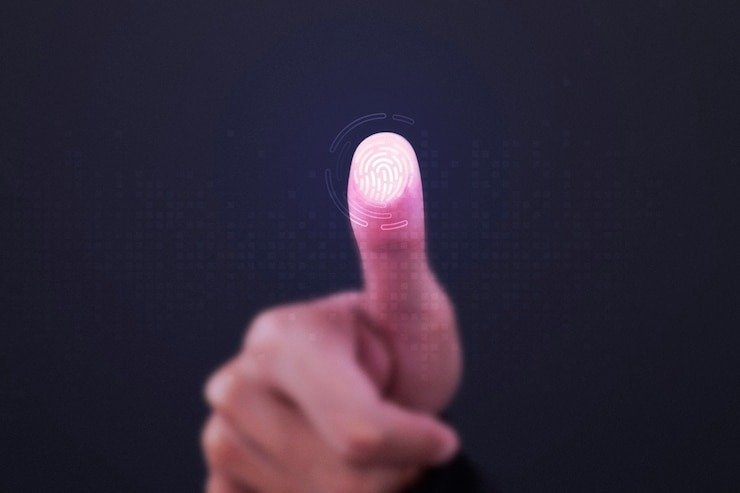Introduction
Fingerprint patterns are unique biological markers that help in identifying individuals with high accuracy. Whether in forensic science, biometric security, or criminal investigations, fingerprints have played a vital role for centuries. These intricate ridge patterns are classified into distinct types, each with its characteristics and significance.
In this article, we will explore the various types of fingerprint patterns, their importance in identification, and their applications in forensic science and security.
What Are Fingerprint Patterns?
Fingerprint patterns refer to the unique ridges and valleys found on the fingertips of humans. These patterns are developed in the fetal stage and remain unchanged throughout an individual’s life. The primary classification of fingerprint patterns includes three main types: Loops, Whorls, and Arches.
Each person has a distinct pattern, making fingerprints one of the most reliable methods for personal identification. Let’s explore these categories in detail.
Types of Fingerprint Patterns
1. Loop Patterns (Most Common Type)
Loop patterns are the most common type, occurring in about 60–65% of the population. In this pattern, ridges enter from one side, curve around, and exit on the same side. Loops are further classified into two types:
a) Ulnar Loop
- The ridges flow toward the little finger.
- More common than radial loops.
b) Radial Loop
- The ridges flow toward the thumb.
- Less common but still present in a significant number of individuals.
2. Whorl Patterns (Circular and Spiral)
Whorls are the second most common fingerprint pattern, occurring in about 30–35% of people. They consist of ridges that form circular or spiral shapes. There are four types of whorl patterns:
a) Plain Whorl
- Circular ridges with a defined center.
b) Central Pocket Whorl
- Similar to the plain whorl but with an inner loop formation.
c) Double Loop Whorl
- Two loops intertwined, forming an “S” shape.
d) Accidental Whorl
- A combination of two or more different patterns.
3. Arch Patterns (Least Common Type)
Arches are the rarest fingerprint patterns, found in only 5% of the population. They do not have deltas or cores like the other patterns.
a) Plain Arch
- Ridges flow smoothly from one side to the other without any sharp curves.
b) Tented Arch
- Similar to the plain arch but with a steep peak in the center.
Importance of Fingerprint Patterns
1. Personal Identification
Fingerprint patterns are unique to each individual, making them a primary method for identification in various applications, including law enforcement, border security, and banking.
2. Forensic Science and Criminal Investigations
Law enforcement agencies rely on fingerprint analysis to solve crimes. Latent fingerprints left at crime scenes can help identify suspects.
3. Biometric Security Systems
Many modern security systems use fingerprint recognition technology for authentication in smartphones, laptops, and access control systems.
4. Medical Research and Genetic Studies
Fingerprint patterns can sometimes indicate genetic conditions or health-related traits, making them valuable in medical research.
Fingerprint Identification Techniques
1. Latent Fingerprint Analysis
Latent fingerprints are invisible to the naked eye and require special techniques such as dusting, fuming, or chemical treatments to be detected.
2. Patent Fingerprints
These are visible fingerprints left by substances like ink, blood, or dirt. They can be directly photographed or scanned.
3. Plastic Fingerprints
Plastic fingerprints are three-dimensional impressions left on soft surfaces like wax, clay, or soap.
4. AFIS (Automated Fingerprint Identification System)
AFIS is a digital system used by law enforcement to store and compare fingerprint data for quick identification.
Quick Facts About Fingerprint Patterns





Challenges in Fingerprint Identification
Despite its accuracy, fingerprint analysis has some limitations, including:
- Poor-quality prints due to sweat, dirt, or injuries.
- Spoofing risks in biometric security systems.
- Errors in matching when using automated fingerprint recognition software.
To overcome these issues, advancements in AI-based fingerprint recognition are improving accuracy and reducing the chances of misidentification.
Conclusion
Fingerprint patterns are a crucial aspect of personal identification, forensic science, and security. The classification into loops, whorls, and arches helps forensic experts, security professionals, and researchers analyze and authenticate identities with high precision.
With technological advancements, fingerprint recognition continues to evolve, ensuring a more secure and reliable method of identification for individuals and organizations worldwide.
